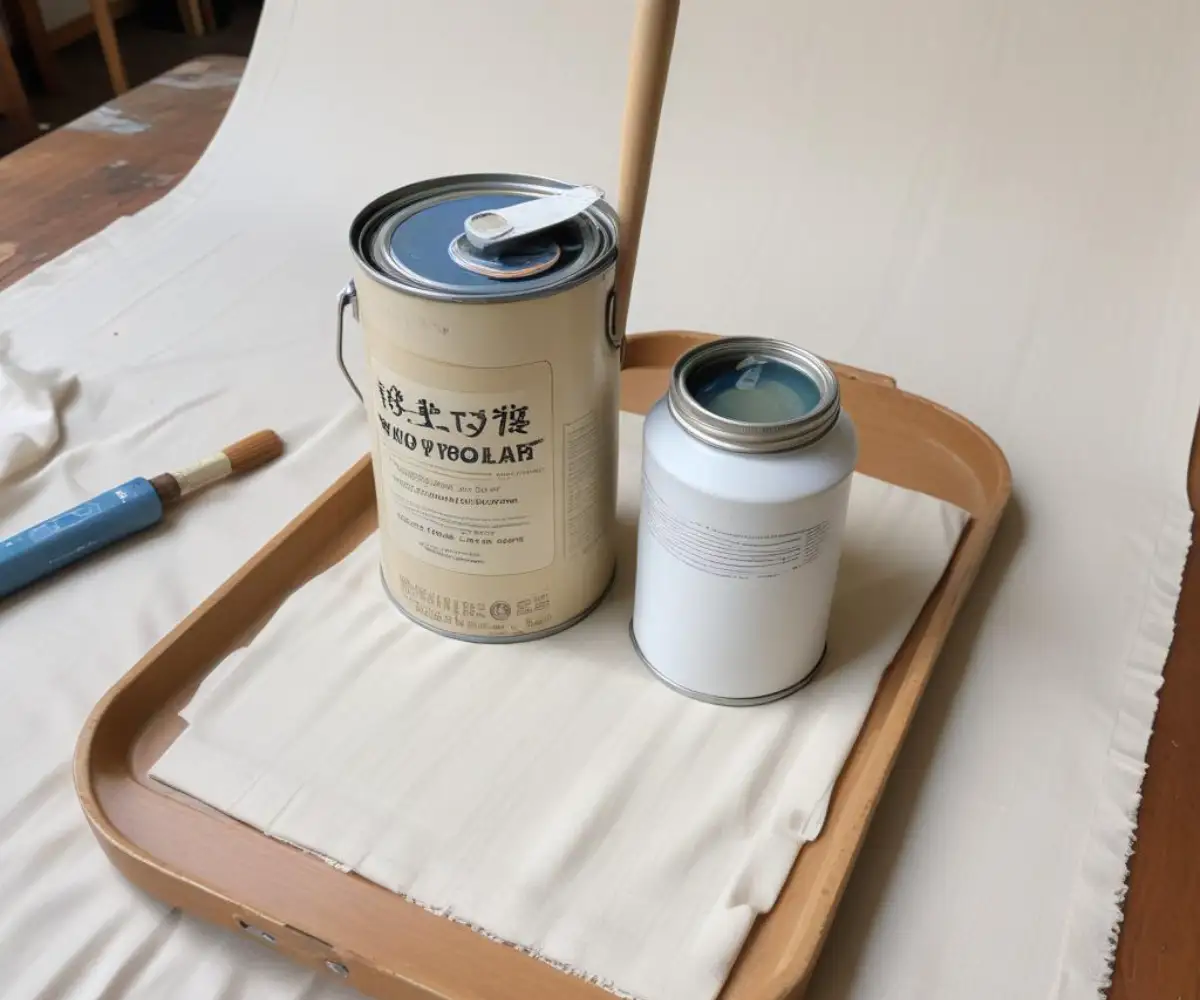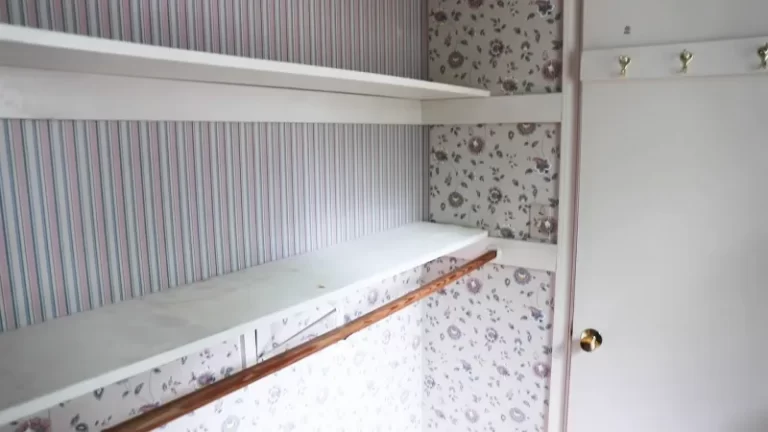Gardz Problem Surface Sealer Alternative: Your Ultimate Guide
You’ve meticulously stripped the old wallpaper or scraped off peeling paint, only to be left with a wall that looks like a battlefield. Damaged drywall paper, stubborn wallpaper adhesive, and chalky, porous surfaces can make you feel like your project is doomed before you even pick up a paintbrush. This is the moment many DIYers and even professionals reach for a trusted problem surface sealer like Zinsser Gardz.
But what happens when you can’t find Gardz, or you’re looking for a more cost-effective or readily available solution? The good news is, you’re not out of options. Understanding the alternatives can save your project from delays and ensure a durable, professional-looking finish on even the most troublesome walls.
You'll Learn About
Why Sealing Problem Surfaces is Non-Negotiable
Before diving into alternatives, it’s crucial to understand why a product like Gardz is so often recommended. Problem surfaces are notorious for causing paint failure. Issues like peeling, blistering, and uneven sheen are often traced back to improper surface preparation.
These specialized sealers are designed to penetrate and bind unstable surfaces, creating a solid foundation for subsequent coats of primer and paint. They lock down everything from torn drywall paper to residual wallpaper glue, ensuring your topcoat adheres properly and looks flawless.
Common Problems That Demand a Sealer
Identifying the issue you’re facing is the first step toward finding the right solution. Here are some of the most common scenarios where a problem surface sealer is essential:
- Torn or Damaged Drywall Paper: This often occurs after removing wallpaper that was applied directly to unprimed drywall. The paper facing tears, exposing the fuzzy, highly porous gypsum core.
- Residual Wallpaper Adhesive: Even after thorough cleaning, microscopic amounts of wallpaper paste can remain. Latex paints can reactivate this glue, leading to cracking and peeling.
- Skim Coat Failures: Applying joint compound or skim coating over a damaged or porous surface without sealing it first can lead to bubbles and a weak finish.
- Chalky or Powdery Surfaces: Old, deteriorating paint can leave behind a chalky residue that prevents new paint from adhering properly.
- Porous Surfaces: New drywall, joint compound, and plaster are highly porous and will absorb paint unevenly if not sealed, resulting in a blotchy appearance.

Top Gardz Alternatives for Every Situation
While Gardz is an excellent product, several other sealers on the market can provide comparable or even superior results depending on your specific needs. Let’s explore some of the best alternatives and when to use them.
1. Zinsser Peel Stop Triple Thick
Often considered the most direct competitor to Gardz, Zinsser Peel Stop is another fantastic product from the same manufacturer. While Gardz is known for its thin, deeply penetrating formula, Peel Stop offers a thicker, high-build coating that can bridge and smooth rough surfaces.
Best for: Peeling paint, cracking, and alligatoring surfaces. It’s excellent for gluing down the edges of old paint and creating a smoother surface, reducing the need for extensive scraping and sanding.
2. Kilz Klear Multi-Surface Primer & Sealer
Kilz Klear is a versatile, fast-drying, water-based primer-sealer that’s a strong contender as a Gardz alternative. It’s designed to seal porous surfaces and provides a clear finish, much like Gardz. It’s also effective at binding chalky surfaces and promoting adhesion for the topcoat.
Best for: Porous surfaces like new drywall, plaster, and wood. It’s also a good option for sealing chalky surfaces and creating a uniform base before painting.
3. Roman Rx-35 PRO-999 Drywall Repair and Sealer Primer
This product is frequently recommended in professional painting forums as a reliable alternative to Gardz, especially for drywall repair. It’s specifically formulated to seal damaged drywall and torn paper facing, preventing the bubbling of joint compound.
Best for: Sealing torn drywall paper after wallpaper removal. It’s an excellent choice before applying a skim coat or other drywall repairs.
4. Oil-Based Primers (e.g., Zinsser Cover Stain)
Before the advent of advanced water-based sealers like Gardz, oil-based primers were the go-to solution for problem surfaces. They are still an excellent choice for sealing stubborn stains and locking down wallpaper adhesive.
Best for: Blocking tough stains like water, smoke, and nicotine. They are also highly effective at sealing old wallpaper adhesive that water-based products might struggle with. If you’re dealing with stubborn residue, consider learning more about how to remove tough coatings from various surfaces.
DIY Sealer Solutions: A Word of Caution
In the world of DIY, you’ll often come across homemade solutions, such as using diluted PVA glue as a sealer. While this might seem like a cost-effective option, it’s generally not recommended for problem surfaces.
PVA glue is not designed to be alkali-resistant and can break down over time when applied to plaster or drywall, leading to paint failure. For a durable, long-lasting finish, it’s always best to use a product specifically designed for the task. The longevity of a proper sealer is a key consideration, much like understanding how long specialized coatings last.
Comparative Analysis of Gardz Alternatives
To help you make the best choice for your project, here’s a quick comparison of the top alternatives:
| Product | Primary Use | Key Feature | Base |
|---|---|---|---|
| Zinsser Gardz | Porous/damaged drywall, wallpaper adhesive | Thin, deep penetration, moisture-resistant | Water-Based |
| Zinsser Peel Stop | Peeling/cracking paint | Thick, flexible, bridges cracks | Water-Based |
| Kilz Klear | Porous surfaces, chalky paint | Fast-drying, multi-surface | Water-Based |
| Roman Rx-35 PRO-999 | Torn drywall paper | Prevents skim coat bubbling | Water-Based |
| Oil-Based Primer | Stain blocking, adhesive sealing | Excellent adhesion, stain blocking | Oil-Based |
Step-by-Step Guide to Using a Problem Surface Sealer
Regardless of which product you choose, the application process is key to success. Follow these steps for a flawless finish:
Step 1: Surface Preparation
Proper prep is 90% of the job. Start by removing all loose and peeling paint, wallpaper, or damaged drywall paper. A good scraper is your best friend here. For any remaining stubborn wallpaper glue, a mixture of warm water and a stripping solution may be necessary. Ensure the surface is clean, dry, and free of dust.
Step 2: Application
Apply the sealer liberally with a brush, roller, or sprayer, ensuring you work it into all the cracks and edges of the problem area. Most of these sealers appear milky but dry to a clear, hard finish. Don’t be alarmed by the initial appearance. For particularly porous areas, a second coat may be necessary.
Step 3: Drying and Recoating
Allow the sealer to dry completely according to the manufacturer’s instructions. This usually takes a few hours. Once dry, you’ll have a stable, non-porous surface ready for patching, priming, and painting.
Making the Right Choice for Your Project
While Zinsser Gardz is a fantastic product, it’s far from the only solution for your problem walls. By understanding the specific issue you’re facing—be it peeling paint, damaged drywall, or stubborn adhesive—you can choose an alternative that is not only effective but also readily available and budget-friendly. Remember, taking the time to properly seal a difficult surface is a critical investment in the longevity and beauty of your final paint job. Proper sealing can even have an impact on things you might not consider, like the effectiveness of your closet insulation by creating a better air barrier.
Frequently Asked Questions
What is Gardz Problem Surface Sealer used for?
Gardz is a water-based sealer designed for porous and damaged interior surfaces. It’s commonly used on torn drywall, plaster, joint compound, and to seal old wallpaper adhesive residue before painting or wallpapering. Its main purpose is to create a stable, moisture-resistant film that prevents issues like blistering and bubbling of the topcoat.
What are some common alternatives to Gardz?
Common alternatives to Gardz include oil-based primers like Zinsser Cover Stain and shellac-based primers like B-I-N, especially for sealing difficult surfaces and blocking stains. Other water-based sealer primers formulated for damaged drywall, such as Roman Rx-35 PRO-999, are also viable alternatives. For sealing surfaces before wallpapering, products like Beeline Primer Sealer can be used.
Can I use a regular PVA primer instead of Gardz on damaged drywall?
While PVA primers are suitable for new, undamaged drywall, they are generally not recommended for severely damaged surfaces with torn paper or residual adhesive. Gardz is specifically formulated to penetrate and harden these problem areas, creating a more stable surface for repair and painting, whereas a standard PVA primer may not prevent bubbling and peeling.
Is an oil-based primer a good alternative to Gardz?
Oil-based primers, such as Zinsser Cover Stain, can be an effective alternative to Gardz for sealing surfaces and blocking stains. They offer excellent adhesion and sealing properties. However, they typically have a stronger odor and require mineral spirits for cleanup, unlike the water-based, low-odor formula of Gardz.
Can I apply Gardz over old paint?
It is generally not recommended to apply Gardz over existing paint. Gardz is designed to penetrate and seal porous or damaged surfaces. If you are dealing with peeling paint, a bridging sealer like Zinsser Peel Stop would be a more appropriate choice to lock down the edges before repainting.

